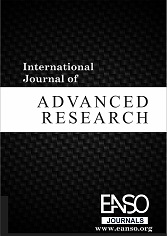Development of a Life Cycle Cost Analysis Model for Mortuary Buildings to Enhance Availability Performance: The Case Study of Musoma Municipal Council Hospital
Abstract
Healthcare facilities require comprehensive maintenance management strategies to ensure optimal service delivery and operational efficiency. This study developed a life cycle cost analysis (LCCA) model to improve maintenance management and availability performance of mortuary buildings, using Musoma Municipal Council Hospital as a case study. A mixed-methods research approach was adopted, involving comprehensive field observations, structured interviews, and systematic surveys with 36 participants representing diverse stakeholders, including engineers, administrators, technicians, mortuary staff, and healthcare professionals. Twelve technical factors influencing maintenance costs were systematically analysed using the Relative Importance Index (RII) methodology to establish priority rankings based on professional expertise and operational experience. The analysis revealed that electrical systems' reliability and backup power emerged as the most critical factor (RII = 0.931), followed by environmental control for chemical storage (RII = 0.923), and infection control and biosafety features (RII = 0.915). A robust multiple regression model was subsequently formulated using the seven highest-ranked factors, producing strong predictive outcomes with R² = 0.780, indicating that 78% of the variance in availability performance could be explained by the identified technical factors. The resulting prediction equation: Y = 0.01 + 0.02X₁ − 0.11X₂ + 0.032X₃ + 0.08X₄ + 0.05X₅ + 0.03X₆ + 0.09X₇ demonstrated statistical significance (F = 10.327, p < 0.001), where X₁ to X₇ represent the prioritized technical components. Comprehensive validation over an eight-month period confirmed the model's reliability and practical applicability, with availability performance demonstrating significant improvement from 20% classified as "Very Severe" in January to 97% classified as "Very Good" in May. The study contributes to the limited body of knowledge on specialised healthcare facility maintenance management and provides hospital administrators with evidence-based tools for strategic decision-making, preventive maintenance planning, cost optimisation, and sustainable mortuary service delivery.
Downloads
References
Barlow, R., & Xie, M. (2009). Reliability and maintainability. Probability and Statistics-Volume II: Probabilistic Models and Methods Foundations of Statistics, 2, 100-125.
Barringer, H. P. (2003). A life cycle cost summary. Proceedings of the International Conference of Maintenance Societies, Mesa Perth, Australia.
Braun, V., & Clarke, V. (2006). Using thematic analysis in psychology. Qualitative Research in Psychology, 3(2), 77-101.
Creswell, J. W. (2014). Research design: Qualitative, quantitative, and mixed methods approaches (4th ed.). Sage Publications.
Dhillon, B. S. (2009). Life cycle costing for engineers. CRC Press.
El-Haram, M. A., Marenjak, S., & Horner, M. W. (2002). Development of a generic framework for collecting whole life cost data for the building industry. Journal of Quality in Maintenance Engineering, 8(2), 144-151.
Evans, R., Haryott, R., Haste, N., & Jones, A. (2010). The long-term costs of owning and using buildings. In Designing Better Buildings (pp. 452-467). Routledge.
Fuller, S. (2010). Life-cycle cost analysis (LCCA). National Institute of Building Sciences, An Authoritative Source of Innovative Solutions for the Built Environment, 1090, 1-15.
Hand, A. J., Sebaaly, P. E., & Epps, J. A. (1999). Development of performance models based on Department of Transportation pavement management system data. Transportation Research Record, 1684(1), 215-222.
Langston, C. (2013). Life-cost approach to building evaluation. Routledge.
Muchiri, P., Pintelon, L., Gelders, L., & Martin, H. (2011). Development of maintenance function performance measurement framework and indicators. International Journal of Production Economics, 131(1), 295-302.
Sambasivan, M., & Soon, Y. W. (2007). Causes and effects of delays in Malaysian construction industry. International Journal of Project Management, 25(5), 517-526.
Tashakkori, A., & Teddlie, C. (2010). Sage handbook of mixed methods in social & behavioral research. Sage Publications.
United Republic of Tanzania. (2022). National Population and Housing Census: Population Distribution by Administrative Areas. National Bureau of Statistics.
World Health Organization. (2015). Healthcare facility management: Guidelines for low-resource settings. WHO Press.
Copyright (c) 2025 Mahona Njigela, Joseph Mkilania, PhD

This work is licensed under a Creative Commons Attribution 4.0 International License.




























